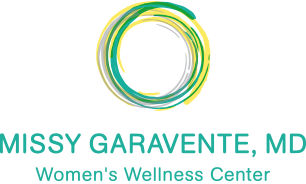The Muddling Misclassification of Bioidentical & Synthetic Hormones

The subject of hormone replacement therapy (HRT) is often accompanied with a fair amount of confusion, misleading & sweeping generalizations—and sometimes even misinformation about how effective or safe treatments are. This muddle is particularly evident when it comes to distinguishing synthetic HRT formulations and bioidentical hormones.
Part of this confusion has to do with how medical literature generalizes the two distinct groups of hormones into one category (failing to make a categorical distinction between what is bioidentical and what is not) and, because of this, the confusion patients experience going into HRT can actually stem from providers and unintentional misinformation being passed onto patients.
I believe this to be a misclassification, as bioidentical hormones are distinct in that they match the identical molecular structure of human hormones—versus synthetic HRT formulations, which do not match.
Consequently this misclassification can result in patients being led to believe that bioidentical hormones will have certain complicated side effects—despite most of these side effects being linked specifically to the synthetic HRT formulations and not to the bioidenticals.
Here is an example of where misclassification can muddy the waters. Progestins are a class of hormones that include bioidentical progesterone. The confusion stems from the fact that there are many synthetic progestins available that spur some progesterone-like actions in the body. Medroxyprogesterone acetate (MPA), also known as Provera (and used in the drug Prempro), is a widely-used example of this. Other synthetic progestins that have progesterone-like activity include norethindrone acetate and norgestryl, which are are frequently used in synthetic HRT formulations. These three progestins are commonly found in birth control pills too.
Because synthetic progestins are not found anywhere in nature, they have many more side effects than bioidentical progesterone which can include PMS, headaches, bloating and even constriction of coronary arteries. Numerous studies show that bioidentical progesterone typically relieves these cycle-related concerns and provides relief for women suffering from angina. But because synthetic progestins are lumped in the category “progesterone” in the medical literature, many doctors think synthetic progestins and bioidentical progesterone are the same. The only “real” progesterone occurs naturally in the female body—or is made in the lab to match it exactly.
The bottom line is that, because of the confusion about which hormone preparations are bioidentical and which are not, most experts lump everything together and warn women of the well-defined comprehensive risks—most of which have actually been associated with the synthetic compounds.
With that being said, even bioidentical estrogen is a growth hormone in the body and may have adverse effects on uterine and breast tissue, especially if not balanced with progesterone. This is an example of why any bioidentical hormone replacement therapy should only be done under the counsel of a provider that approaches each patient as an individual to address unique systemic needs.

